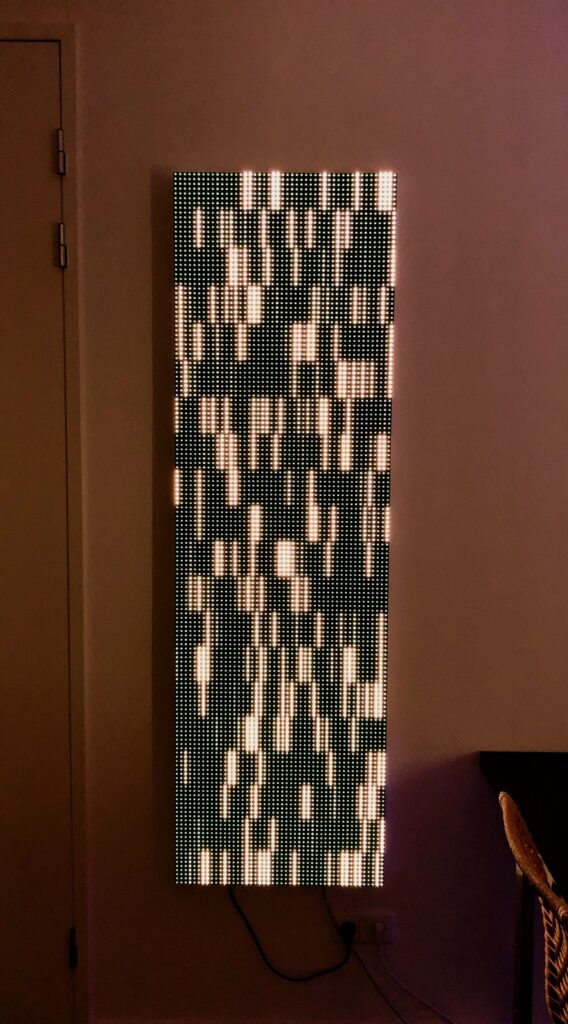What is it?
Lunar is one of my latest hobby projects. I’ve always been on the look out for other ways to make more high-fidelity ambient displays for in the home. Displays with the primary objective to just be beautiful objects in their environment. You’ll find many of these in public areas or stadiums; but usually cost a lot of money and significant computing power to operate. Which is fine in a one-off high-end context. I wanted to build one myself using low-cost parts and open-source libraries.
The panel is made from a matrix of 3×6 LED panel with a 10mm LED pitch. I deliberately went for the biggest pitch I could find. Not only makes it a lot easier to make it large; but I also want to use the low res as a feature by designing patterns specifically for it. It’s not meant to be a high definition display.
Also made a little web app that you can use to connect to the device and tweak the effects. The panel can run different algorithms:





How it’s made
The panel is made using a 3×6 matrix of RGB LED Matrix panels with 10mm pitched LEDs (you can find many variants by searching for : LED RGB Matrix P10 on AliExpress.
It uses a Raspberry Pi 3 as central computing unit.
The metal panel interconnects have been made using my CNC milling machine. The frame modules running around the perimeter were 3D printed.

I wanted to get some more Python experience; so I used that as the main platform. In hindsight this probably wasn’t the best choice due to lack of performance on the Pi to refresh the screen fast enough; yet being a bit creative it did eventually work out. I used a external library that would update the screen and I would use python to update an image that I would write to the buffer whenever it was updated.
I used Flask to create the API and used the integrated ninja templating to create the web app. It just runs the basic dev webserver that comes with Flask.
To run the display I used Henner Zeller’s fantastic RGB Matrix library. Be sure to check it out of you’d like to build something similar. He’s got a great write-up of all you need to get going here:
https://github.com/hzeller/rpi-rgb-led-matrix





